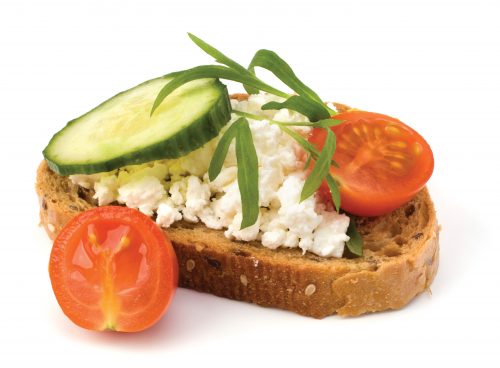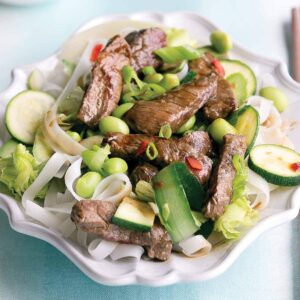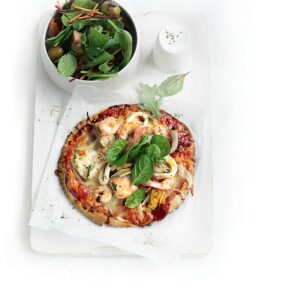
Fresh unripened cheeses are versatile and delicious. HFG senior nutritionist Rose Carr takes us through the range.
Fresh unripened cheeses
Cottage cheese: Simply made by draining the curds, usually from a low-fat milk. Cottage cheese has a lumpy yet creamy texture.
Ricotta: Traditionally made from the whey left over from producing other cheeses, although these days ricotta may contain some whole milk as well. Ricotta is sweet and creamy with a slightly grainy texture.
Paneer/panir: A mild, firm cheese often sliced or cubed when used in Indian dishes. While most cheeses use rennet to curdle the milk, lemon juice is used in paneer, making it suitable for vegetarians.
Quark/quarg: Usually a low-fat cheese, quark originates from Germany where it is the most common cheese eaten. A light, smooth-textured cheese, quark can be used in sweet desserts such as mousse or cheesecake, or in savoury dishes replacing sour cream.
Fromage frais: French for ‘fresh cheese’, this is a very simple cheese of drained, soft, shaped curd. Usually low in fat it can be used in the same way as quark.
Feta: Greece’s most well-known cheese is traditionally made with sheep’s milk or a goat’s milk/sheep’s milk blend, but cow’s milk feta is also now common. The type of milk used changes the flavour and colour but feta is generally crumbly and salty.
Stretched-curd fresh unripened cheeses
Haloumi/halloumi: A dense cheese which keeps its shape when cut. Generally sliced and cooked before using, it can be fried without oil as it has around 27 per cent fat. Usually stored in a salty brine, it is also high in sodium.
Mozzarella: Originally a water-buffalo milk cheese, mozzarella is now more commonly made with cow’s milk. Egg-shaped balls are sold fresh in liquid whey or mild brine, distinct from the drier packaged varieties. Traditionally used on pizza, when melted mozzarella has a unique stretchiness. Small mozzarella balls are called bocconcini.
Fresh unripened cream cheeses
Cream cheese: Smooth textured, sweet, soft and spreadable. We recommend a reduced-fat version with around 16 per cent fat as opposed to traditional varieties with around 32 per cent fat.
Mascarpone: An Italian-style thick, smooth cream cheese. It is rich and can be as high as 46 per cent fat.
How much fat?*
| 0-1% | Reduced-fat cottage cheese, extra-light ricotta, fromage frais |
| 4-9% | Cottage cheese, quark, reduced-fat ricotta |
| 10-16% | Ricotta, reduced-fat paneer |
| 17-19% | Reduced-fat cream cheese |
| 20-29% | Feta, mozzarella, haloumi |
| 30-46% | Paneer, cream cheese, crème fraiche, mascarpone |
*Please check labels as brands do vary.
Nutrition
Cheese contains protein and B vitamins but it’s also naturally high in total fat and about two-thirds of the fat can be saturated fat. Although there is some evidence the effect of saturated fats from cheese on blood fats and heart disease could be counterbalanced by components in cheese, the research is not yet definitive so it’s advisable to stick with the advice to limit saturated fat.
Salt helps develop the flavour and texture of cheese and the sodium content of fresh cheeses varies from virtually nil up to 1500mg or more sodium per 100g. Fresh cheese also varies widely in its calcium content. Cottage cheese and quark have very little calcium. Check labels as product do vary.
How to choose a fresh cheese
When buying cheese for a particular recipe, decide which lower-fat cheeses can be used as a substitute for any high-fat cheeses specified. It is worth experimenting with favourite recipes.
Once you’ve decided which types of cheese will deliver the flavour and texture needed for the purpose you have in mind, compare the per 100g column on the nutrition information panels. Choose products lower in saturated fat and sodium.
www.healthyfood.com










